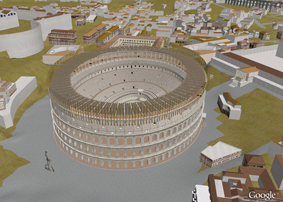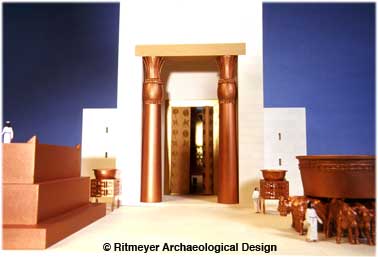Here you can read one of the latest articles on “Jews in the Temple Area: A ‘Mount’-ing Controversy”. Three rabbis, Rabbi Yoseph, Rabbi Elyashiv and Kanievsky, demand a complete ban on Jews entering any part of the Temple Mount on the grounds that the ritual purity of the area might be violated.
On the other hand, there are a growing number of rabbis, such as Rabbi Moshe Tendler, Rabbi Yehuda Kreuzer and the rabbis of the Temple Institute, who believe that Jews should be allowed to enter onto the Temple Mount, and in an interview with IsraelNationalNews, Rabbi Kreutzer cited a well-known rabbinical source: “In short, the Radbaz [a leading halachic authority from the 1500s] ruled that the Dome of the Rock is the Foundation Stone in the Holy of Holies…. He wrote that without a doubt this is the identity of the place. He wrote in a definite way the definite identity of the place,” Kreuzner reiterated. “If so, it’s possible to do the measurements.”
The “measurements” have been done already, for there is so much archaeological evidence to show that the Rock inside the Dome of the Rock is the Foundation Stone, that is indeed possible to set out the precise location of the Temple and its courts. For the last 30 years, I have used the information of Middot, Josephus and archaeology to analyze the Temple Mount.
The pre-Herodian Temple Mount was a square platform of 500 cubits, inside of which was the soreg, a partition screen to keep out Gentiles and Jews who were disqualified from entering the inner courts. Further inside was the Court of the Women and the Azarah, the court around the temple itself, which was accessible to priests only.
The location of the soreg in the southern court depends on the location of two Temple Mount mikvaot, Cisterns 6 and 36 according to Warren’s enumeration, and the soreg should be located just to the north of them. Mikvaot were used for ritual bathing, which, of course, needs to be done before entering the holy area. Even if the rabbis would stay outside of the soreg, there is ample space on the Temple Mount for them to walk on.
The Court of the Women was located east of the raised Muslim platform and the Azarah was located on this platform. By staying off the platform, rabbis could never defile the Holy of Holies, which was located inside the Dome of the Rock. Even walking on the raised platform, there is no danger of trespassing on the Holy of Holies.
If the fear of the rabbis is to tread of the area of the Holy of Holies alone, then they should stay outside of the Dome of the Rock and the rest of the Temple Mount should be accessible to them.
On the detailed plan below, the pre-Herodian Temple Mount is indicated in yellow. and the soreg in the southern court is just north of the two mikvaot. The raised Muslim platform is grey and the Herodian Temple Complex is in red.













